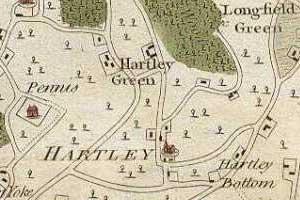Go To Section
Tain (Northern) Burghs
County
Available from Boydell and Brewer
Background Information
Wick (1715, '47), Caithness; Kirkwall (1722), Orkney; Tain (1727), Dingwall (1734), Ross-shire; Dornoch (1741), Sutherland
Number of voters:
80
Elections
| Date | Candidate |
|---|---|
| 16 Feb. 1715 | ROBERT MUNRO |
| 13 Apr. 1722 | ROBERT MUNRO |
| Robert Gordon | |
| 9 Sept. 1727 | ROBERT MUNRO |
| 18 May 1734 | SIR ROBERT MUNRO |
| 28 May 1741 | CHARLES ARESKINE |
| Sir Robert Munro | |
| Election declared void, 1 Mar. 1742 | |
| 2 Apr. 1742 | ROBERT CRAIGIE |
| Sir Robert Munro | |
| 22 July 1747 | SIR HARRY MUNRO |
| Sir John Gordon |
Main Article
The chief interests in Tain Burghs were those of the Sinclairs of Ulbster at Wick, the earls of Morton at Kirkwall, the Munros of Foulis at Tain, the earls of Cromartie at Dingwall, and the earls of Sutherland at Dornoch. From 1715 to 1741 the seat was held, with government support, by Sir Robert Munro, who wrested the control of Dingwall from the Cromarties in 1716,1 retaining it by arresting and kidnapping opponents.2 In 1741 Lord Cromartie recovered Dingwall, with the support of Lord Ilay, Walpole’s election manager for Scotland, whose protégé, Charles Areskine,3 was returned by the votes of Wick, Dornoch, and Dingwall, against those of Tain and Kirkwall for Munro. Munro petitioned on the ground that the Wick delegate had been irregularly appointed and that the Dingwall delegate, Lord Cromartie, was illegal as a peer.4 After Walpole’s fall the House of Commons declared the election void. At the ensuing by-election Lord Tweeddale, the new secretary of state for Scotland, put up Robert Craigie, Areskine’s successor as lord advocate, who was returned with the support of Lord Sutherland.5 After Munro’s death at Falkirk, his son, Sir Harry Munro, stood with Pelham’s support against a Leicester House candidate, Sir John Gordon, Lord Cromartie’s brother-in-law. Munro was returned by Wick, Tain, and Kirkwall, Gordon securing the votes of Dingwall by Cromartie, and Dornoch by Sutherland.6

